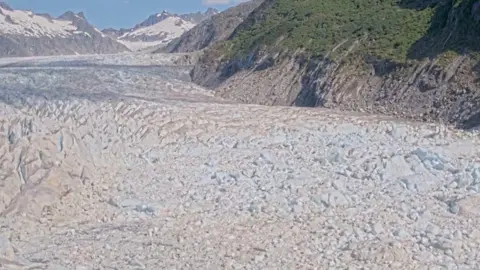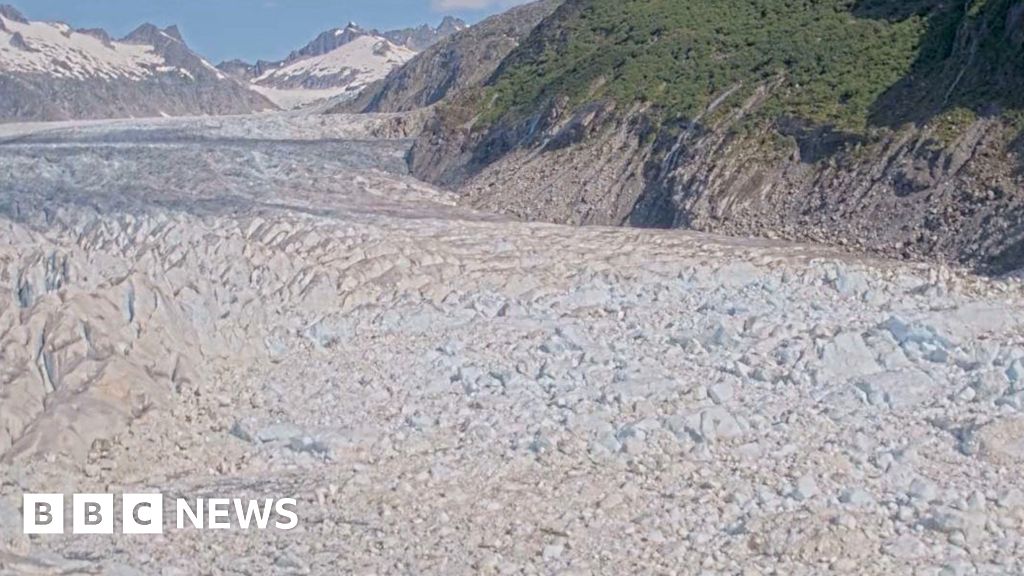BBC News
Some Alaskans are evacuating their homes as meltwater escapes a basin dammed by the Mendenhall Glacier – raising fears of record-breaking flooding in the US state’s capital city.
The National Weather Service (NWS) office in Juneau has issued a flood warning as glacial outburst water flows into Mendenhall River, putting homes in the area at risk.
For days, local officials have warned residents they may be forced to evacuate. On Tuesday, they confirmed water had begun escaping the ice dam and flooding was expected in the coming days.
The glacier, a popular tourist attraction, is 12 miles (19km) from Juneau.
Water levels reached 9.85ft (3m) on Tuesday, below major flooding levels which begin at 14ft, the NWS said. But by Wednesday morning they were above 16ft, which is considered a crest.
“This will be a new record, based on all of the information that we have,” Nicole Ferrin, a weather service meteorologist, said at a press conference on Tuesday.
 USGS/Reuters
USGS/ReutersThe Juneau city website explains that glacial lake outbursts happen when a lake of melting snow and ice and rain drains rapidly. It compares the process to pulling out a plug from a full bathtub. When meltwaters reach a certain level, they can overtop a glacier that previously held them back.
Alaska Governor Mike Dunleavy issued a state disaster declaration on Sunday because of the “imminent threat of catastrophic flooding from a glacier lake outburst flood (GLOF)” in the Juneau area.
Flooding has been an annual concern in the area since 2011, as homes have been damaged and swept away by deluges. Last year, hundreds of residences were damaged.
Mountain glaciers are shrinking around the world as temperatures rise.
Extra meltwater can collect to form glacial lakes. Scientists have observed an increasing number and size of these lakes globally since 1990.
The natural dams of ice and rock that hold the lakes in place can fail suddenly and unpredictably, triggering floods.
Researchers expect climate change to increase the number of these outburst floods in future, although past trends – and the causes of individual floods – are complicated.








